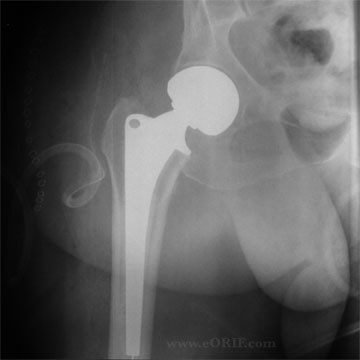
The Garden alignment index was used to assess the levels of reduction measured by plain radiography, which provided the anteroposterior (AP) and lateral views of hip joints immediately after surgery. Their ages when they first sustained fractures, fracture type graded by the Garden classification, the time elapsed before surgery, the degree of reduction after surgery, firm fixation after surgery, and the presence of osteoporosis were assessed. We excluded lower transcervical femoral neck fractures from this study. Diagnosis of subcapital femoral neck fracture was performed by observing the fracture line at the junction between the femoral head and neck. Finally, 84 patients were enrolled as subjects.

The cases excluded from the study were two cases of previous hip fracture, three cases with a history of cancer, eight cases with special medical conditions (one case of vasculopathy, two cases of pathological fractures, two cases of rheumatic arthritis, one case of osteomyelitis, two cases in chronic alcoholics) that may cause AVN. Of the 102 patients who underwent internal fixation using cannulated screws, 97 patients had a follow-up for more than 2 years. Based on the anatomic location, 214 patients were classified as having subcapital fracture. 4, 5, 6, 7) The purpose of this study was to analyze the incidence of AVN and fixation failures in patients treated with internal fixation using cannulated screws after being diagnosed with subcapital femoral neck fractures.įrom January 1996 to January 2013, 853 patients were admitted to the Inha University Hospital with a femoral neck fracture. 3)Įspecially, a displaced fracture of the subcapital femoral neck is known to cause many complications, such as AVN of the femoral head or nonunion, compared with other femoral neck fractures. 1, 2) The incidence of avascular necrosis (AVN) and fixation failure following internal fixation of the femoral neck fracture was reported to be 20%–30% and 8%–15%, respectively.

Internal fixation is the preferred treatment option if the patient is young and does not have very severely displaced fractures, whereas arthroplasty might be chosen over internal fixation if the patient is very old and has severely displaced fractrues. Arthroplasty and internal fixation can be viable surgical treatment options for those with femoral neck fractures. Femoral neck fracture is a common injury in the elderly, and its incidence is rising in parallel with an increase in traffic accidents and population aging.


 0 kommentar(er)
0 kommentar(er)
